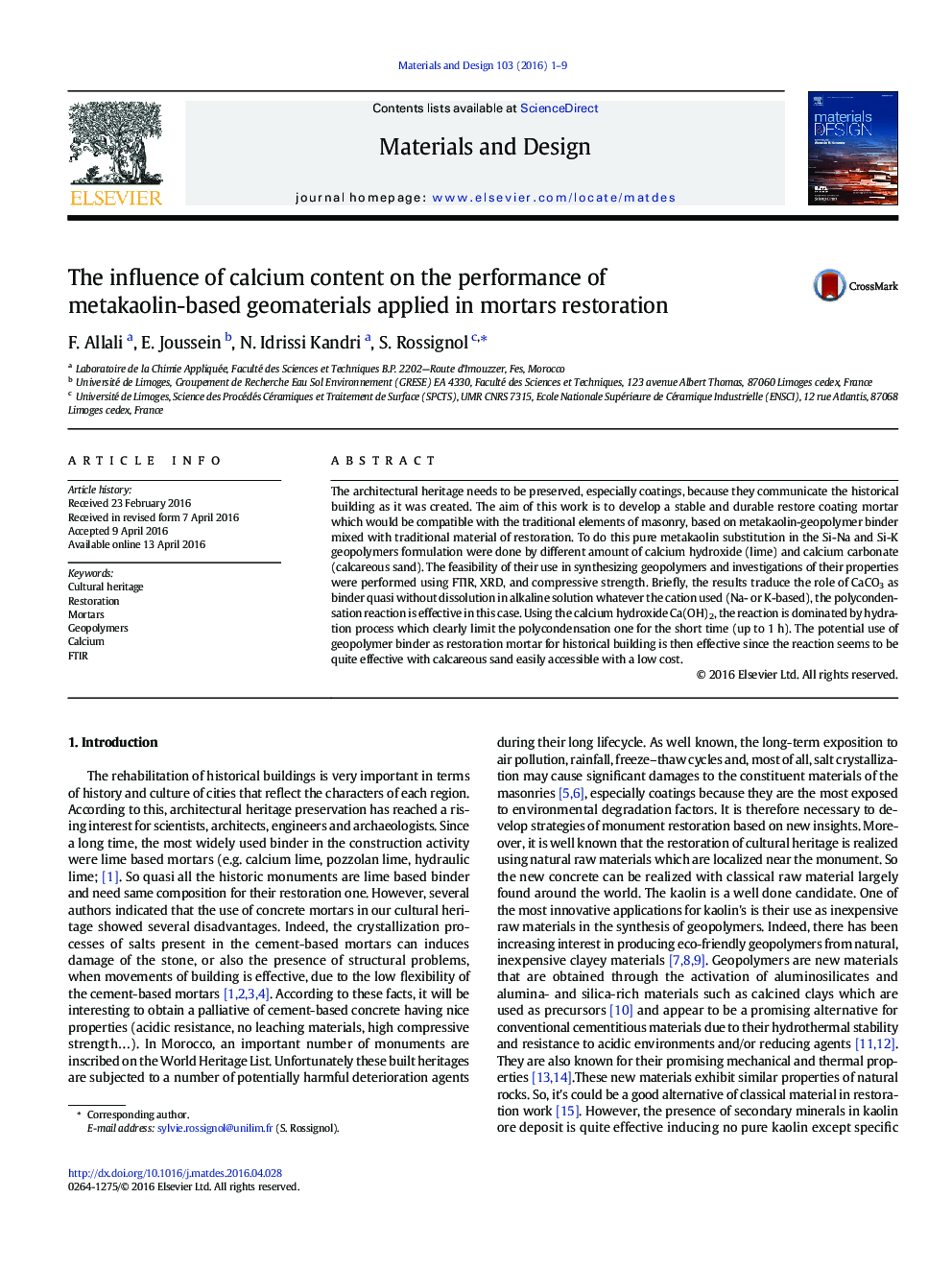| Article ID | Journal | Published Year | Pages | File Type |
|---|---|---|---|---|
| 828000 | Materials & Design | 2016 | 9 Pages |
•New calcium-based geopolymer were synthesized from calcium hydroxide or calcareous sand.•Polycondensation is effective in short time then followed by hydration reaction.•This new binder is quite interesting for restoration mortars use.
The architectural heritage needs to be preserved, especially coatings, because they communicate the historical building as it was created. The aim of this work is to develop a stable and durable restore coating mortar which would be compatible with the traditional elements of masonry, based on metakaolin-geopolymer binder mixed with traditional material of restoration. To do this pure metakaolin substitution in the Si-Na and Si-K geopolymers formulation were done by different amount of calcium hydroxide (lime) and calcium carbonate (calcareous sand). The feasibility of their use in synthesizing geopolymers and investigations of their properties were performed using FTIR, XRD, and compressive strength. Briefly, the results traduce the role of CaCO3 as binder quasi without dissolution in alkaline solution whatever the cation used (Na- or K-based), the polycondensation reaction is effective in this case. Using the calcium hydroxide Ca(OH)2, the reaction is dominated by hydration process which clearly limit the polycondensation one for the short time (up to 1 h). The potential use of geopolymer binder as restoration mortar for historical building is then effective since the reaction seems to be quite effective with calcareous sand easily accessible with a low cost.
Graphical abstractFigure optionsDownload full-size imageDownload as PowerPoint slide
